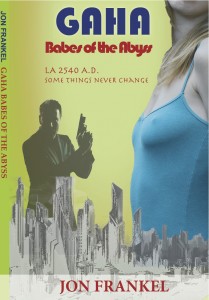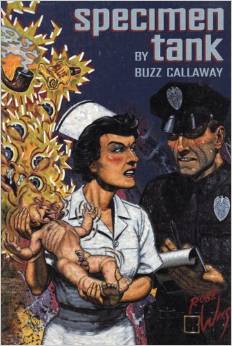IN THE MIDST OF WARS: GRAHAM GREENE’S THE QUIET AMERICAN
IN THE MIDST OF WARS: GRAHAM GREENE’S THE QUIET AMERICAN
 The Quiet American
By Graham Greene
In The Midst of Wars
By Edward Landsdale
The Huk Rebllion
By Benedict J. Kerkvliet
Graham Greene’s The Quiet American is a love triangle and murder mystery set in Vietnam in the 1950’s, as French power collapses and Americans are dribbling in to shore up the colonial enterprise. Thomas Fowler is a cynical, misogynistic English journalist living with Phuong, a young Vietnamese woman who prepares his opium pipe and in his words, opens her legs for him. It’s not a bad existence. His devout wife, whom he does not love, is in England. Fowler believes in nothing, not even his own pursuit of pleasure. He is a selfish, dissipated and intelligent man who is not even looking for a reason to live. Phuong would like to be married. For Phuong the relationship is one of necessity, not convenience. Into this arrangement comes Pyle, attached to the American economic mission. Pyle falls in love with Phuong and wants to marry her, to rescue her as he would like to rescue her country.
The novel begins with Pyle’s murder and is told in flashbacks. Greene is an extraordinary novelist and his prose, always subtle and effortless, quietly unfolds the mystery of the love triangle and murder. Pyle and Fowler hold each other in mutual contempt and each misreads the other in critical ways. Pyle assumes there is some sort of honor and dignity in Fowler that don’t really exist, at least not in the form he assumes, and Fowler misjudges Pyle badly, mistaking his enthusiasm and idealism for innocence. What emerges is that Fowler actually does in some sense love Phuong, but his real emotional attachment is to Vietnam itself and a sense of justice, which emerges gradually. Like Rick in Casablanca, Fowler takes a side, but it isn’t with the French or the Americans.
As an Englishman Fowler has a jaded view of the ‘mission civilisatrice’. The French in the novel–the policeman Vigot, and a bomber pilot–are men who fight for nothing other than duty and survival. The Americans are loud, naïve idiots. And then there are the Vietnamese. Phuong and her sister represent them here, and we don’t know them well, other than their opportunism and practicality. There is a Vietminh operative who contacts Fowler, but he is Chinese and lives in Cholon. The political situation is described in great detail, and it is hopeless. There are the Vietminh, whom we never meet, apart from their work: a canal clogged with ambushed bodies, a missile attack on an outpost by a rice paddy, a hand grenade tossed into a restaurant. The country is riven by factions, the Hoa Hao and Cao Dai religious sects, gangsters in Cholon. Pyle’s solution to this, derived from a Harvard text, is to find a ‘third way’, a ruler for the country not associated with French Colonialism or Communism. A nationalist who can unite the sects. Someone friendly to American business. He believes the head of the Cao Dai, General The, to be this man. But Pyle doesn’t understand the ‘treachery’ of General The. Vietnam is no place for idealists.
When I discussed The Quiet American with the woman who gave me the book I remarked on how many of the details we associate with the American phase of the war are here: napalm, free fire zones, gunning down civilians in sampans, bombing raids, assassins who fade into the rice paddies. She said it showed how prescient Greene was. A good novelist should see more than he or she knows I guess, but what Greene really was was an astute observer. Because all of these things were actually happening and there was no reason not to know this. It is often asserted by policy makers and people in the press that it only became obvious after the Tet Offensive of 1968 that the war was a lost cause. But in 1965 David Halberstam was reporting this for the New York Times, a paper that everyone read at the time. He simply asked officers on the ground what was happening. Certainly anti-war activists knew the reality of the war long before 1968. The idea that the hopelessness and cruelty of the war, its utter pointlessness, only became apparent after February 1968 is preposterous. It was in evidence before it even started. Because this was true of the French war, which preceded the American war. Greene was reporting on what he saw.
It is sometimes said that the model for Pyle was Edward Lansdale, but as Robert Stone points out in his excellent introduction, Lansdale arrived in Vietnam as the book went to press. Lansdale isn’t really like Pyle, he’s more like Don Draper. Lansdale was an American advertizing executive turned military intelligence officer who advocated fighting insurgencies using the methods of the insurgents themselves. He saw an insurgency as a political conflict. If the Communists are honest, do not steal from the peasants and promise land reform, then those fighting them had to promise and deliver the same things. Honest elections of reformist politicians, land reform and then the selective and ruthless use of violence in support of those objectives would defeat an insurgency. His lab was the Philippines, during the Huk rebellion that followed World War 2. Lansdale identified a reformist leader, Magsaysay, and encouraged him and others to run in elections that were perceived to be honest. They instituted a land reform that relocated peasants from overcrowded areas of Luzon to the island of Mindanao, where they were given land and water buffalo. In Lansdale’s version of events he was largely successful. The Huk rebellion ended and there was no Communist take over of the Philippines. The only problem is that Magsaysay was killed in a plane crash. We know the story after that: Ferdinand Marcos eventually came to power. The country was and remained a crony capitalist kleptocracy. A different and more detailed view of the Huk rebellion can be found in Benedict J. Kerkvliet’s excellent study The Huk Rebellion: a study of peasant revolt in the Philippines. This book gives the necessary historical context for what was actually a decades long peasant struggle.
The second half of Lansdale’s book, In the Midst of Wars, unfolds in Vietnam, where he is sent to advise Diem. Lansdale published In the Midst of Wars in 1971, when America was losing the war and trying to get out. It is hard not to think that he intended it as an ‘I told you so’ story. Diem is the opposite of Magsaysay in almost every way. He is inflexible, a Confucian authoritarian who represents a narrow slice of Vietnamese society. He was a nationalist, but fed directly into the two main narratives of the Communists, who opposed both colonialism and traditional Vietnamese culture. If Diem was free of the taint of French collaboration he was in thick with the Americans, and was a northern Catholic. He was the ‘third way’ sought by Pyle. It ended in a van, with a bullet in the back of the head of each of the Ngo brothers.
As it turns out Lansdale’s approach was never used in Vietnam. It was used in Iraq, to ‘defeat’ the Al Qaida insurgency, but I find the so called success of that strategy a little suspect given that it was used after a nihilistic civil war had ethnically cleansed much of the country and consumed hundreds of thousands of lives.
There is a long history of modern Vietnamese anti-colonialism that extends into the 19th century. It is, other than the American phase of the Vietnam Wars, the most widely documented aspect of Vietnamese history in English. Start with David Marr’s three books: Vietnamese Anticolonialism, 1885-1925; Vietnamese Tradition on Trial, 1920-1945; Vietnam, 1945: the Quest for Power.
Greene was a shrewd observer and brilliant novelist. The Quiet American is a good story beautifully told. What makes it great is that an astute observer in the 1950s didn’t foresee but saw the horror, in human and individual terms, of the propensity of large nations to destroy small ones in the pursuit of wealth, under the delusion of ideologies.



